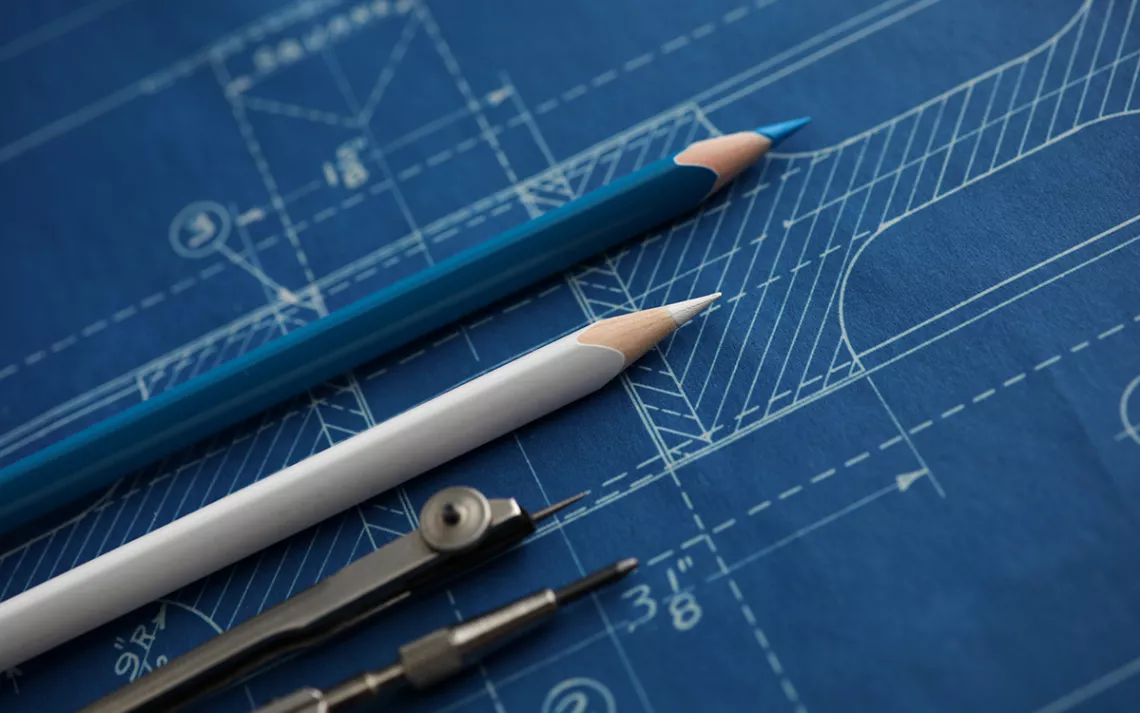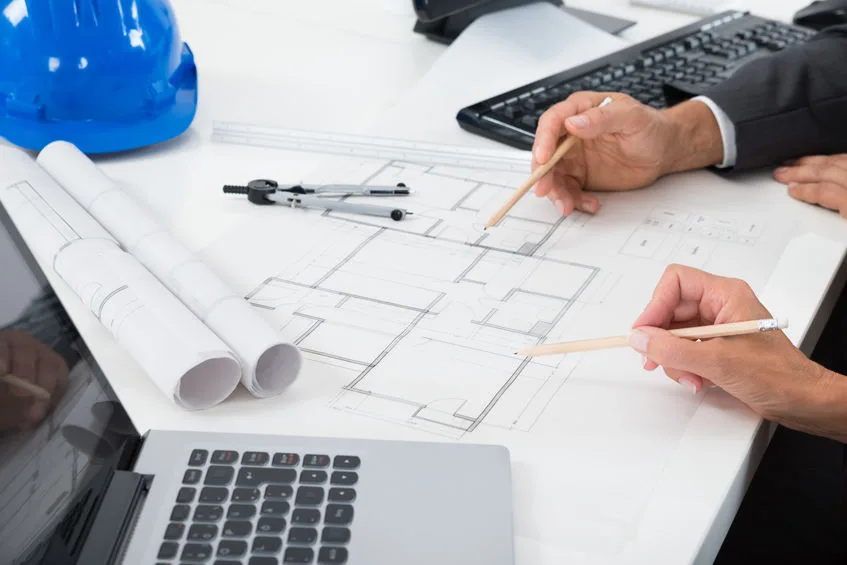Architect Portfolio Tips for Getting Noticed in the Industry
Architect Portfolio Tips for Getting Noticed in the Industry
Blog Article
Understanding the Diverse Profession Paths Available for Aspiring Architect
As a hopeful Architect, you have a world of profession paths waiting for you. Each course offers unique challenges and possibilities to use your creative thinking and technological knowledge. Whether you're drawn to conventional architecture or the nuances of lasting layout, there's a particular niche that straightens with your rate of interests. Comprehending these diverse alternatives can form your expert journey, yet which instructions will you select to explore initially?
Conventional Architecture: Creating Structures and buildings
Traditional design concentrates on developing structures and structures that blend capability with visual appeal. Your styles can mirror cultural heritage, showcasing regional practices while meeting contemporary needs.
You'll establish abilities in drafting, model-making, and site evaluation, enabling you to envision and connect your ideas properly. Engaging with customers, you'll require to recognize their vision and translate it right into viable styles.
Furthermore, developing codes and sustainability methods are important in your job, ensuring your structures are risk-free and environmentally pleasant. As you grow in your occupation, you'll locate opportunities in household, business, and even restoration projects, each offering distinct difficulties. Embracing typical design leads the way for a fulfilling career that admires the past while shaping the future.
Urban Planning: Shaping Communities and Public Spaces
As an ambitious Architect, you can play a crucial duty as a city organizer, changing how communities connect and work. By using neighborhood involvement approaches, you'll guarantee that citizens have a voice in forming their environment. Plus, incorporating sustainable style principles will help produce areas that not just fulfill today's demands but also safeguard the future.
Duty of Urban Planners
While lots of could believe of engineers as the single dreamers behind structures, city planners play a necessary duty in shaping the broader landscape of neighborhoods and public areas. By working together with different stakeholders, you'll aid make parks, transport systems, and household locations that advertise social communication and access. Your knowledge in spatial style and neighborhood dynamics allows you to envision future growth while maintaining social heritage.
Area Involvement Methods
Effective community involvement methods are vital for city coordinators to guarantee that the voices of homeowners are listened to and valued in the planning procedure. To promote meaningful discussion, you should focus on open forums and workshops where neighborhood members can reveal their ideas and problems. By actively paying attention and incorporating feedback, you'll produce rooms that mirror the community's requirements, inevitably leading to more successful and sustainable metropolitan atmospheres.
Lasting Layout Concepts
When making urban spaces, incorporating sustainable design principles is critical for producing environments that thrive both ecologically and socially. You should start by concentrating on power performance, making use of products that minimize waste and promote recycling. Think about integrating eco-friendly spaces, like parks and gardens, to enhance biodiversity and improve air quality. Advertising walkability and public transportation can reduce reliance on cars, fostering a much healthier neighborhood.
Designing with water preservation in mind is also vital-- believe about rainfall gardens and absorptive surfaces to handle stormwater. Involving neighborhood members throughout the planning procedure guarantees that the rooms you produce fulfill their requirements and urge social communication. By embracing these principles, you'll contribute to vibrant, sustainable urban landscapes that profit everybody.

Landscape Design: Developing Sustainable Outside Settings
As you explore landscape design, you'll uncover essential style concepts that develop gorgeous and practical outdoor areas. Sustainable methods play a vital role in guaranteeing these atmospheres grow while minimizing environmental impact. Plus, you'll discover a range of job opportunities that allow you to make a real difference in how people interact with nature.
Design Principles in Landscape
Understanding design principles in landscape architecture is essential for creating lasting exterior settings that integrate with nature. You'll require to consider elements like range, balance, and proportion to assure your designs feel cohesive and welcoming. Integrating native plants not only boosts biodiversity however likewise reduces water use, making your landscape resistant. Think of the circulation of area and exactly how individuals engage with it; pathways and seating areas should welcome exploration and leisure. Furthermore, focus on seasonal changes, making with products that complement the environments year-round (Architect). By prioritizing sustainability and looks, you can produce exterior areas that enrich the area and promote health. Accepting these principles will establish a strong structure for your job in landscape style.
Sustainable Practices Introduction
Lasting practices in landscape design not just concentrate on aesthetic appeals yet also prioritize environmental wellness and source conservation. By integrating indigenous plants, you enhance biodiversity and decrease the demand for chemical fertilizers and pesticides. Carrying out efficient watering systems helps conserve water and lessens runoff, securing neighboring ecosystems. You can create areas that advertise soil health, such as utilizing natural products and exercising permaculture principles. Furthermore, integrating environment-friendly framework, like rainfall yards and permeable sidewalks, aids in stormwater management and reduces urban warmth. You add to a much healthier planet and provide rooms that promote neighborhood connection when you develop exterior atmospheres with sustainability in mind. Eventually, these practices assure your styles benefit both people and the environment for years ahead.
Career Opportunities Exploration
With a solid foundation in lasting practices, landscape design supplies a variety of job paths that enable you to make a purposeful influence on the setting. You could work as a landscape developer, developing aesthetically pleasing and practical exterior spaces, or focus on eco-friendly restoration, assisting to restore broken ecosystems. anonymous Urban coordinators typically team up with landscape architects to create eco-friendly areas in metropolitan setups, boosting city livability. If you're passionate about education, think about ending up being a landscape style instructor, motivating future generations. Additionally, you could collaborate with nonprofits focused on ecological sustainability or participate in study to innovate brand-new techniques. Each path not only shapes lovely settings yet additionally cultivates a much healthier earth for future generations.
Lasting Style: Focusing on Eco-Friendly Practices
As you discover your profession in architecture, welcoming green methods can set you apart in an affordable field. Sustainable style concentrates on developing buildings that decrease ecological impact while improving occupant health. By integrating eco-friendly materials, energy-efficient systems, and lasting building strategies, you'll add to a greener future.
Begin by gaining understanding of green qualifications like LEED or BREEAM, which can reinforce your qualifications. Consider just how natural light, air flow, and thermal efficiency can optimize layout. Work together with engineers and environmental professionals to innovate options that reduce waste and save sources.
Do not forget the relevance of community involvement-- interesting local stakeholders can inspire styles that integrate with the setting. As clients progressively focus on sustainability, your know-how in environmentally friendly methods will certainly not just attract projects however likewise accomplish your interest for responsible architecture. Accept this helpful site vital facet of the profession, and watch your occupation prosper.
Historical Conservation: Shielding and Restoring Cultural Heritage
While you commence on your architectural journey, consider the important function of historic preservation in preserving our cultural heritage. This area concentrates on the defense and restoration of significant structures, websites, and frameworks that tell the stories of our past. By participating in historic preservation, more information you'll help safeguard the building heritage that forms area identification.
As a historic conservation Architect, you'll assess historical significance and analyze the condition of frameworks. You'll work carefully with conservationists and historians to assure authentic repair strategies are utilized. This occupation path enables you to mix creativity with research study, allowing you to design remedies that appreciate initial materials and workmanship.
Your work not only adds to sustainability by reusing existing structures however also promotes a feeling of satisfaction within areas. Accepting this course will certainly aid you come to be a guardian of background, protecting the stories and appearances that enhance our lives.
Inside Design: Enhancing Indoor Spaces
Historical conservation and indoor architecture both share a commitment to improving the developed atmosphere, yet they concentrate on different aspects. While historic preservation emphasizes maintaining a structure's cultural and historical value, interior architecture absolutely nos in on enhancing interior areas for capability and aesthetics.
As an aspiring Architect, you'll find that interior architecture allows you to mix creative thinking with technological abilities. You'll make rooms that not just look great however also promote convenience and performance. This area includes comprehending how light, color, and products engage within an area, impacting mood and use.
You'll work with different projects, from domestic homes to industrial offices, making sure that each atmosphere meets the demands of its passengers. By prioritizing user experience, you can change interiors right into functional and motivating spaces, making a significant influence on exactly how people engage with their surroundings. Welcome the chance to enhance interior environments and form the means individuals function and live.
Industrial Design: Combining Performance With Visual Appeals
Commercial design plays an important duty in creating items that seamlessly mix visual appeals with capability, guaranteeing that what you make use of daily is not just aesthetically appealing yet also useful. As a hopeful Architect, you might involve on your own in this field, concentrating on designing whatever from furnishings to customer electronics. Your work entails understanding individual demands, materials, and producing procedures, allowing you to create ingenious remedies that boost everyday experiences.
In commercial design, you'll frequently collaborate with designers, marketing professionals, and producers, making certain that your styles are not only gorgeous yet also viable. This profession course offers a vibrant environment where imagination fulfills practicality, making it a fulfilling choice for designers interested in forming the products of tomorrow.
Regularly Asked Questions
What Educational Certifications Do I Need to End Up Being an Engineer?
To become a designer, you'll require a specialist degree in design, normally a Bachelor's or Master's. Additionally, you'll have to finish a teaching fellowship and pass the Architect Registration Evaluation to exercise legally.
Exist Qualification Requirements for Different Building Job Paths?
Yes, there're accreditation requirements for various architectural paths. Architect. You'll require to pass exams, complete teaching fellowships, and sometimes pursue specialized training, depending upon your selected emphasis, like landscape design, metropolitan style, or historical conservation
What Software Program Abilities Are Vital for Engineers Today?

Exactly How Can I Gain Practical Experience While Examining Architecture?
You can obtain functional experience by interning at architectural companies, joining design competitions, offering for community projects, or collaborating with schoolmates on real-world assignments. These chances boost your skills and build beneficial connections in the market.
What Task Opportunities Exist Outdoors Conventional Design Firms?
You can check out various work opportunities outside typical architecture companies, like urban preparation, interior decoration, landscape style, building monitoring, property growth, or perhaps functions in sustainability consulting. Each deals distinct obstacles and rewards.
Whether you're drawn to typical architecture or the nuances of lasting layout, there's a niche that lines up with your passions.When designing metropolitan areas, including sustainable design principles is crucial for creating atmospheres that grow both environmentally and socially.As you explore landscape design, you'll find crucial design principles that create lovely and useful outdoor areas.Comprehending style concepts in landscape design is crucial for developing lasting exterior environments that harmonize with nature.In commercial layout, you'll often collaborate with engineers, marketing professionals, and suppliers, ensuring that your layouts are not just stunning however also viable.
Report this page